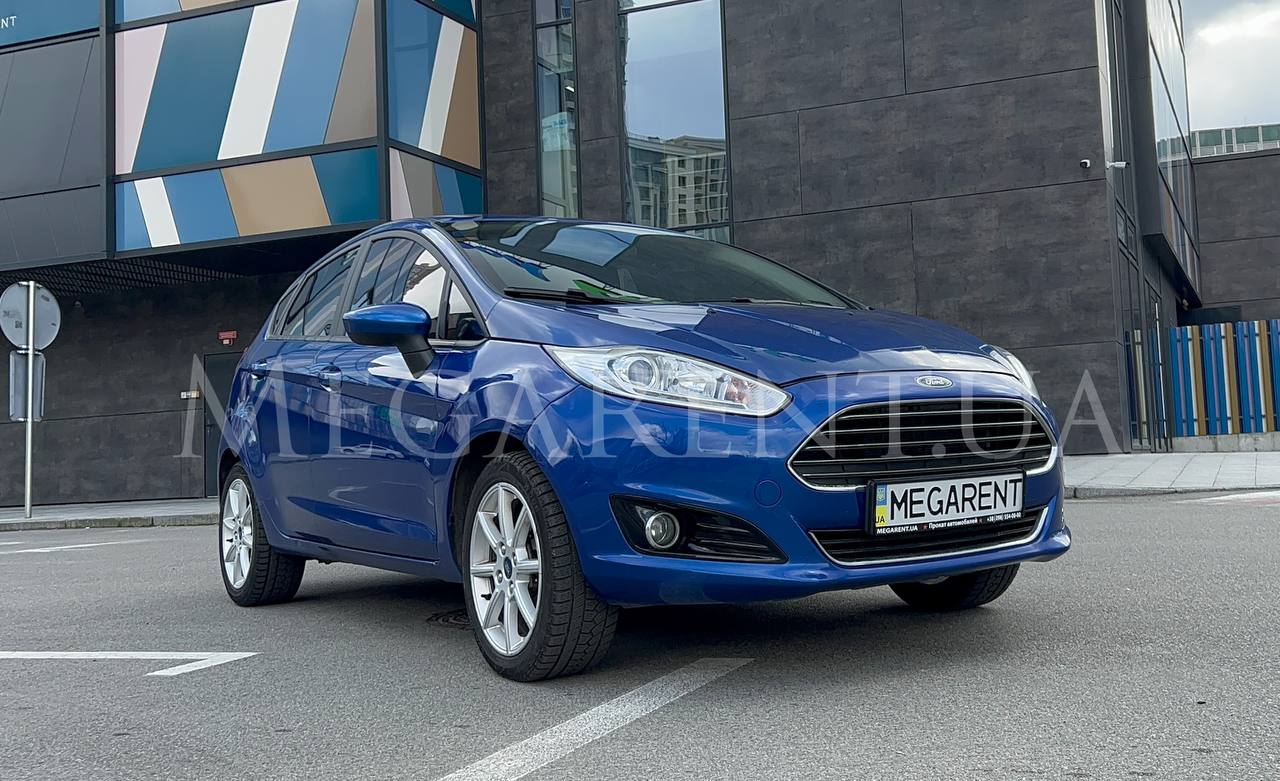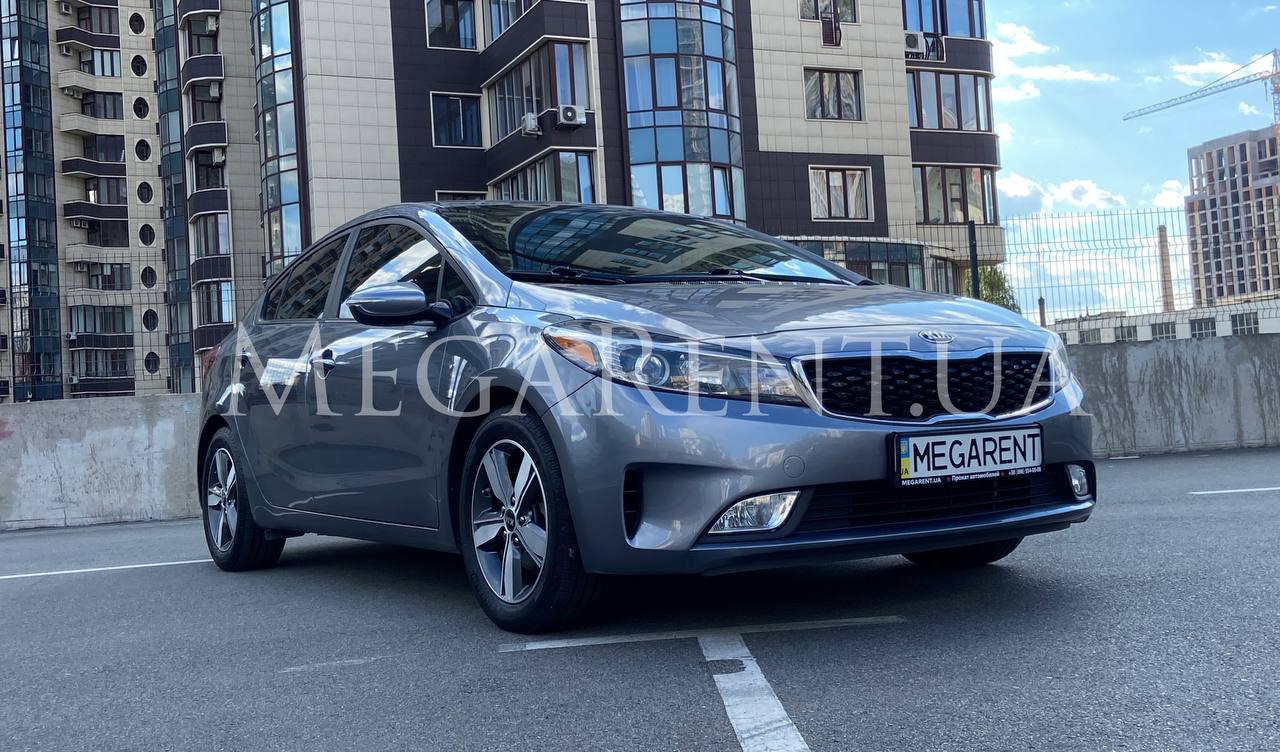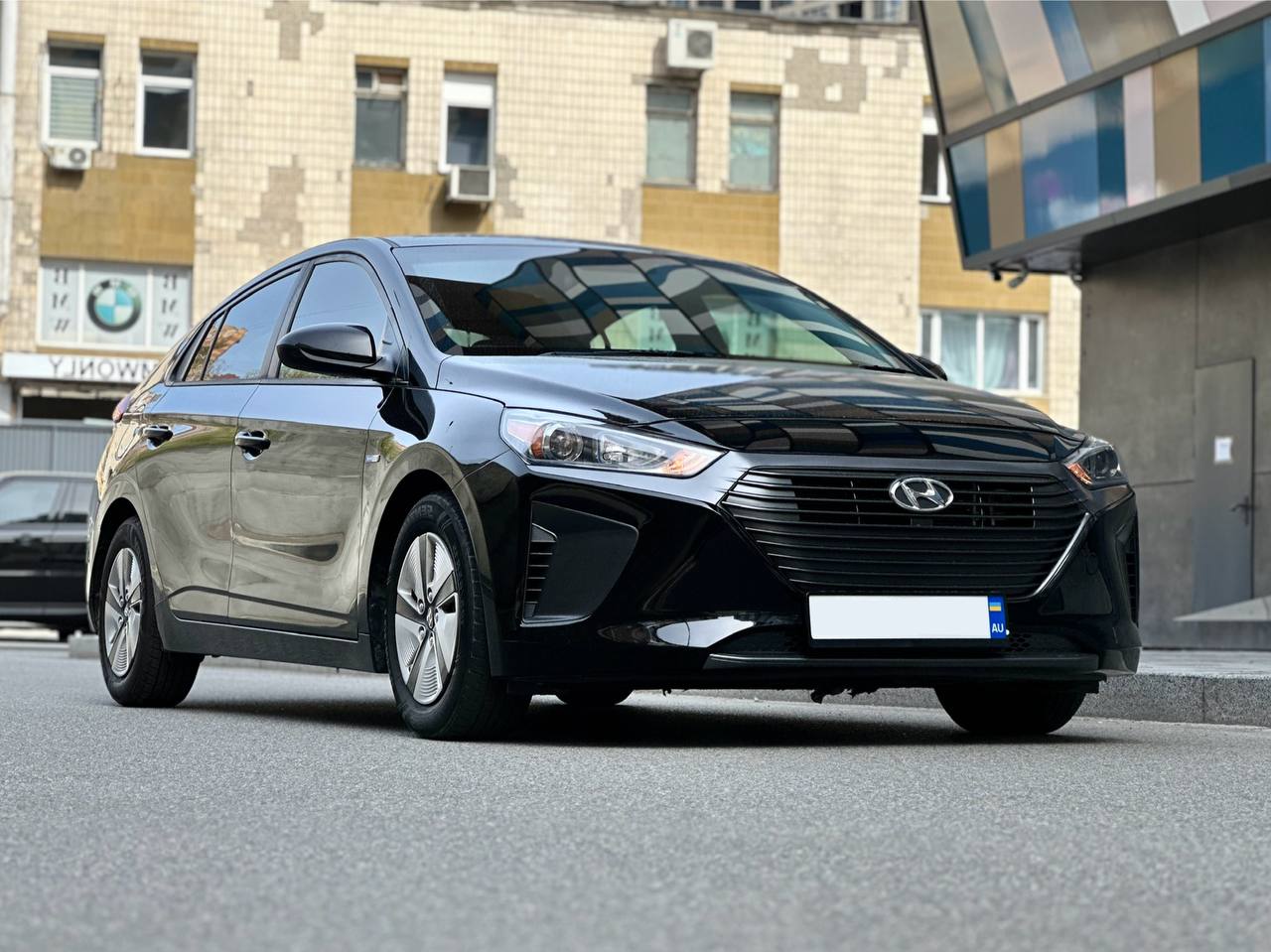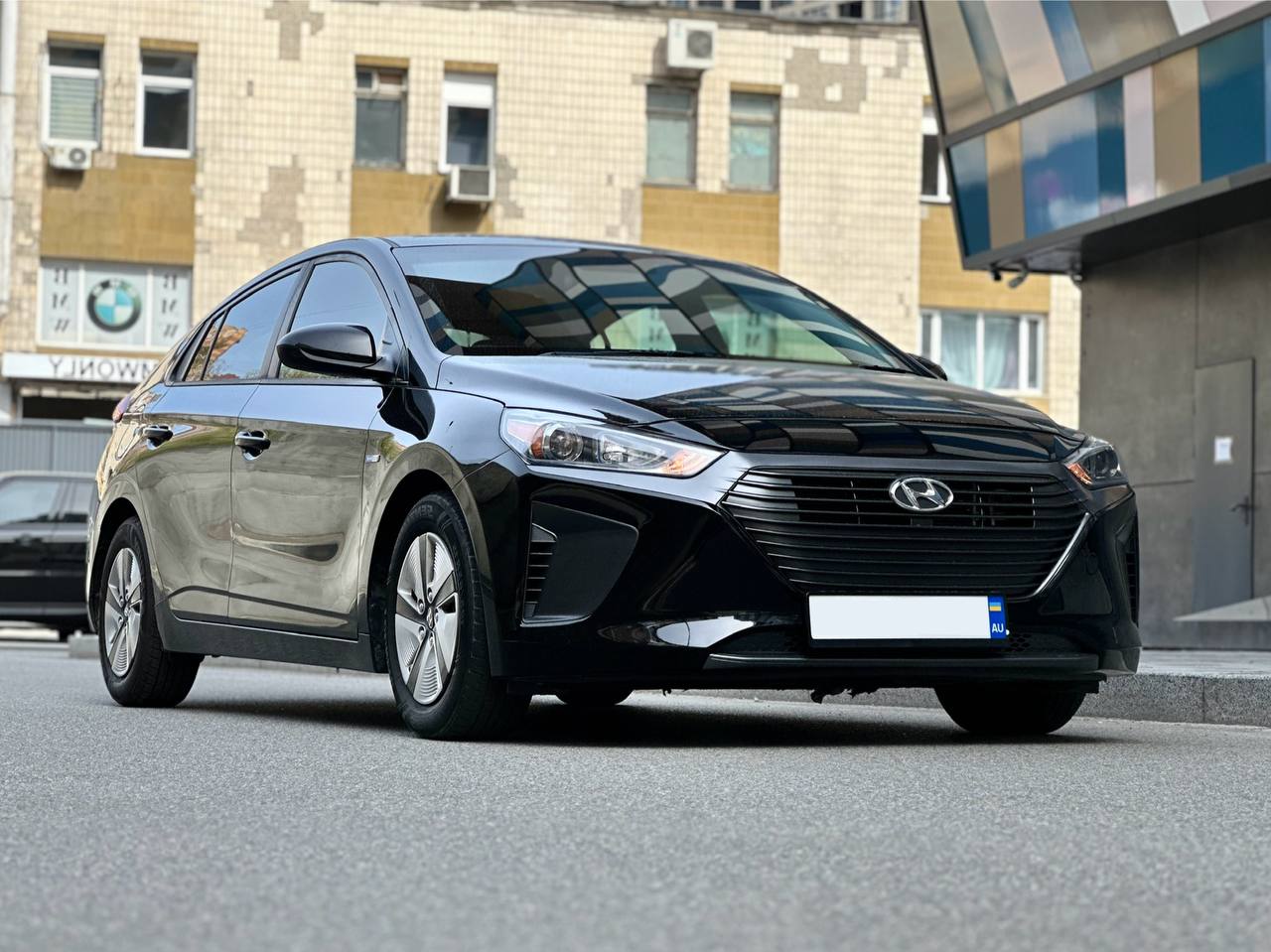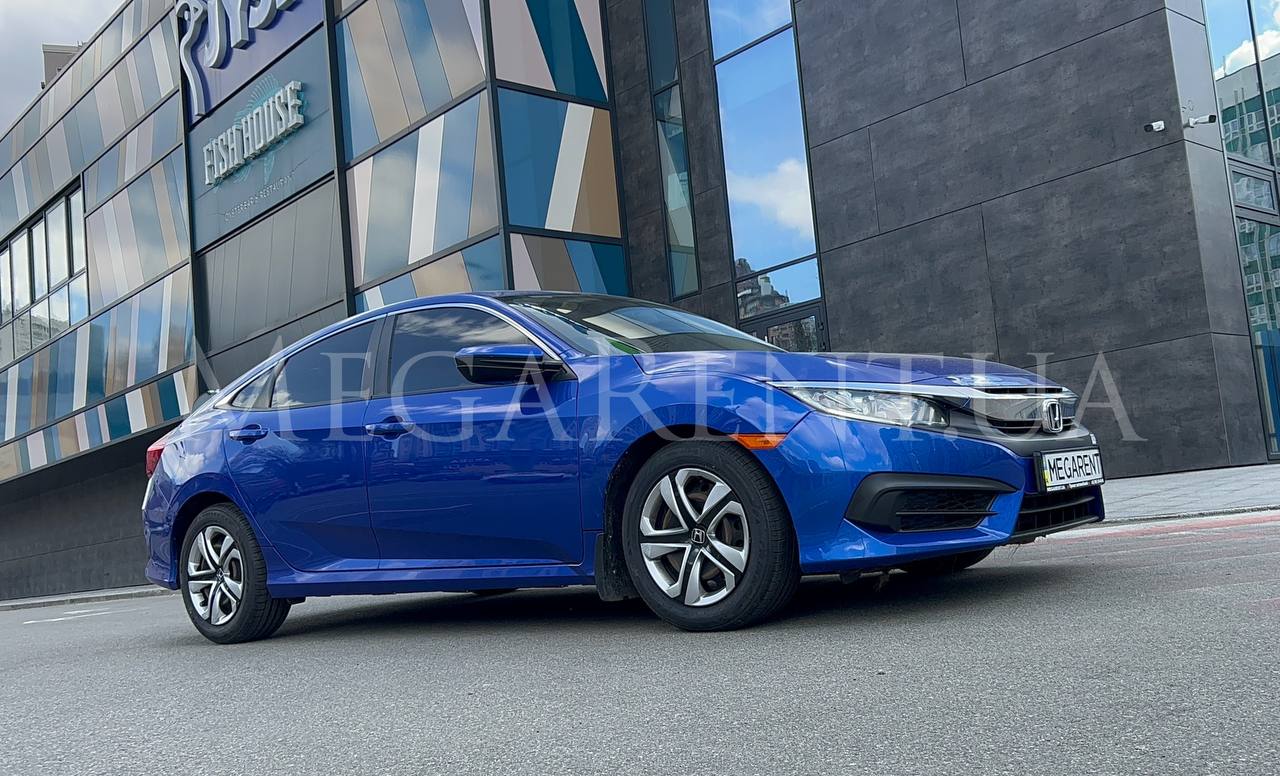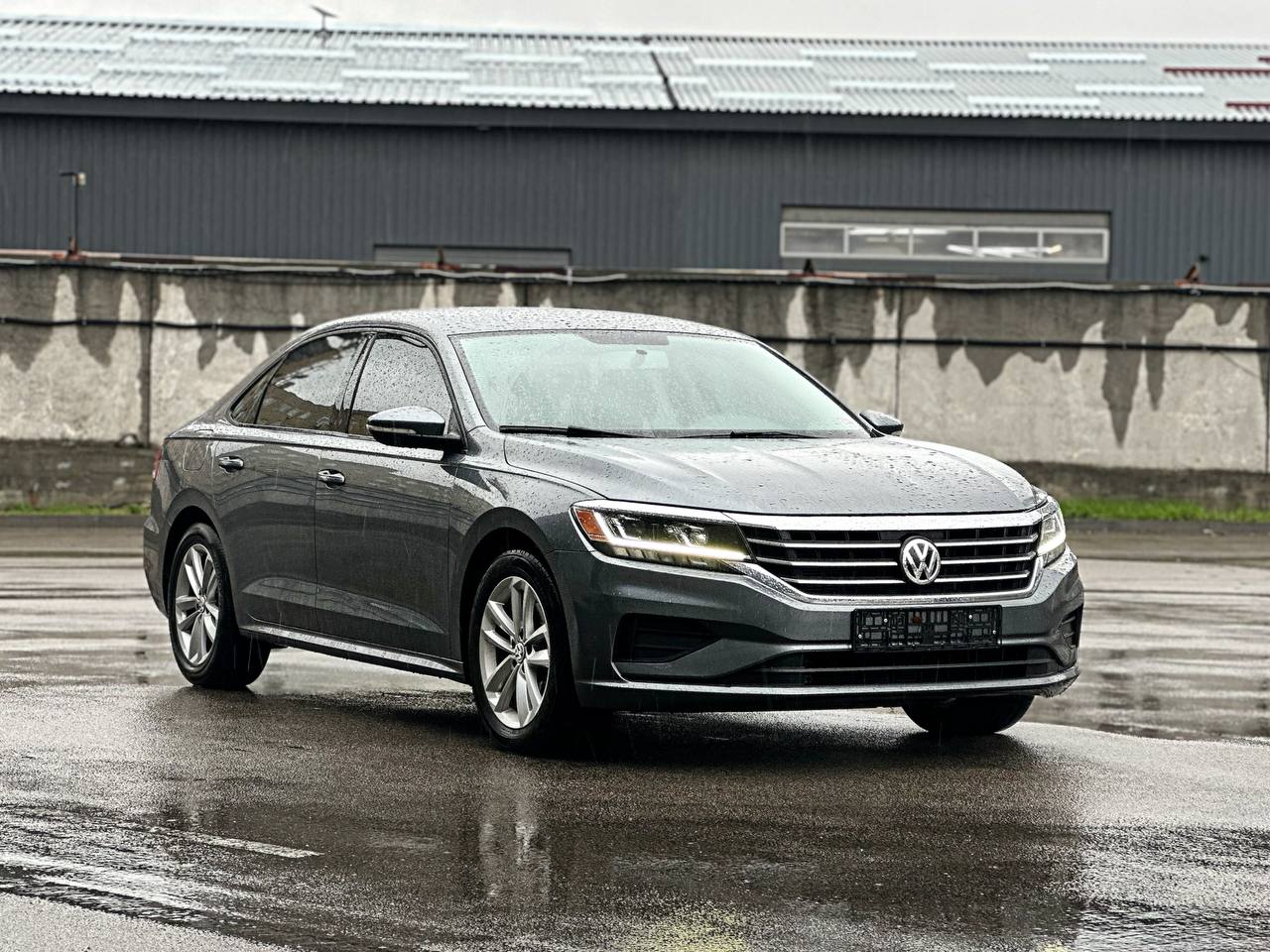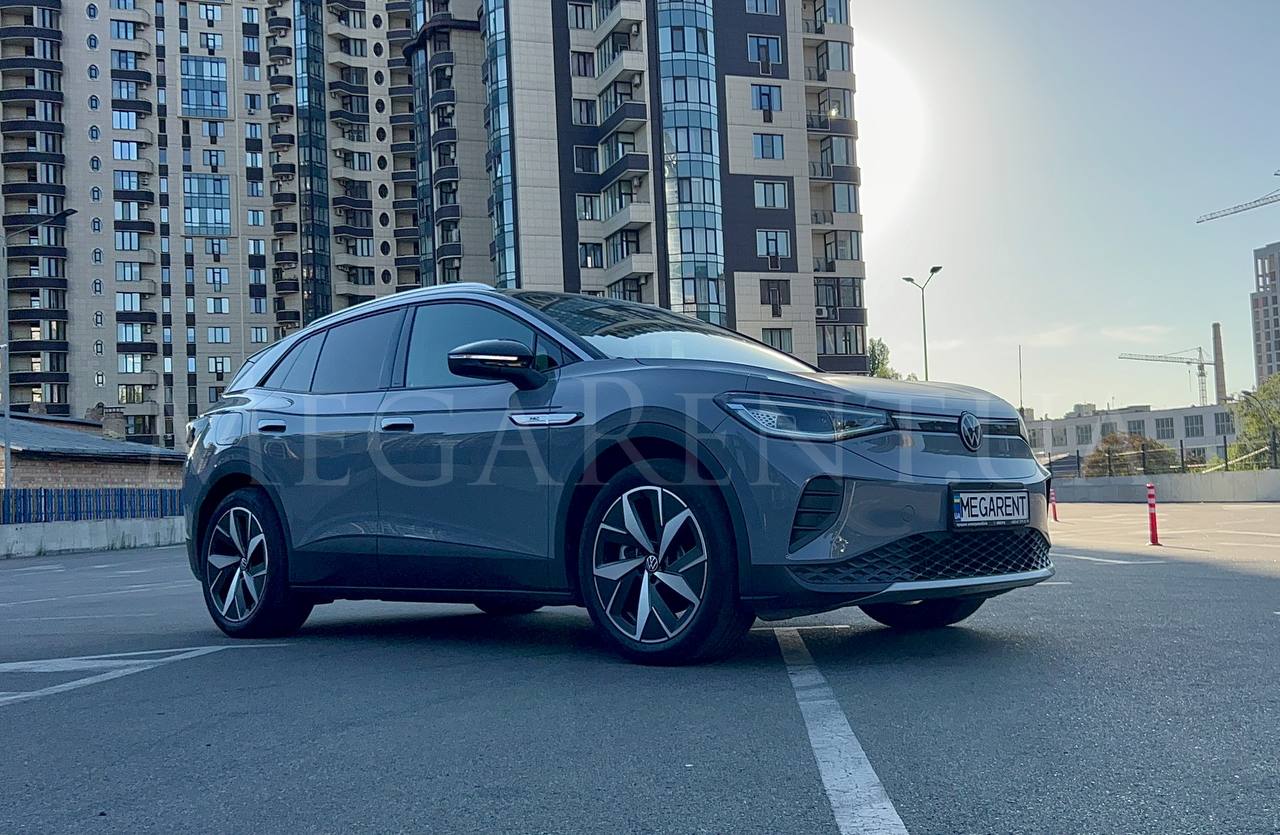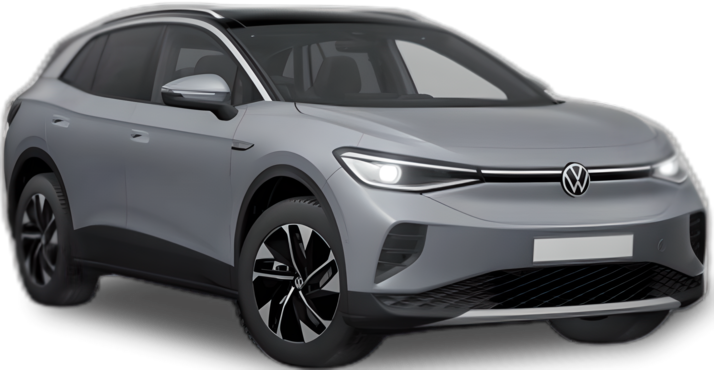| 30 та більше діб: | 0 $ | за 1 добу |
| від 10 до 29 діб: | 0 $ | за 1 добу |
| від 4 до 9 діб: | 0 $ | за 1 добу |
| від 1 до 3 діб: | 0 $ | за 1 добу |
| Застава: | 0 $ |
| 30 та більше діб: | 20 $ | за 1 добу |
| від 10 до 29 діб: | 23 $ | за 1 добу |
| від 4 до 9 діб: | 28 $ | за 1 добу |
| від 1 до 3 діб: | 30 $ | за 1 добу |
| Застава: | 350 $ |
| 30 та більше діб: | 20 $ | за 1 добу |
| від 10 до 29 діб: | 25 $ | за 1 добу |
| від 4 до 9 діб: | 28 $ | за 1 добу |
| від 1 до 3 діб: | 30 $ | за 1 добу |
| Застава: | 350 $ |
| Автомат | хетчбек | ||
| 1,6 л (105 л.с.) | 4 місць | ||
| Бензин/газ | Передній | ||
| 5,9 л/100 км. | Кондиціонер |
| 30 та більше діб: | 20 $ | за 1 добу |
| від 10 до 29 діб: | 23 $ | за 1 добу |
| від 4 до 9 діб: | 28 $ | за 1 добу |
| від 1 до 3 діб: | 30 $ | за 1 добу |
| Застава: | 350 $ |
| 30 та більше діб: | 20 $ | за 1 добу |
| від 10 до 29 діб: | 25 $ | за 1 добу |
| від 4 до 9 діб: | 28 $ | за 1 добу |
| від 1 до 3 діб: | 30 $ | за 1 добу |
| Застава: | 350 $ |
| 30 та більше діб: | 23 $ | за 1 добу |
| від 10 до 29 діб: | 25 $ | за 1 добу |
| від 4 до 9 діб: | 30 $ | за 1 добу |
| від 1 до 3 діб: | 35 $ | за 1 добу |
| Застава: | 400 $ |
| 30 та більше діб: | 23 $ | за 1 добу |
| від 10 до 29 діб: | 25 $ | за 1 добу |
| від 4 до 9 діб: | 30 $ | за 1 добу |
| від 1 до 3 діб: | 35 $ | за 1 добу |
| Застава: | 500 $ |
| 30 та більше діб: | 23 $ | за 1 добу |
| від 10 до 29 діб: | 25 $ | за 1 добу |
| від 4 до 9 діб: | 30 $ | за 1 добу |
| від 1 до 3 діб: | 35 $ | за 1 добу |
| Застава: | 500 $ |
| 30 та більше діб: | 25 $ | за 1 добу |
| від 10 до 29 діб: | 30 $ | за 1 добу |
| від 4 до 9 діб: | 35 $ | за 1 добу |
| від 1 до 3 діб: | 40 $ | за 1 добу |
| Застава: | 500 $ |
| 30 та більше діб: | 25 $ | за 1 добу |
| від 10 до 29 діб: | 30 $ | за 1 добу |
| від 4 до 9 діб: | 35 $ | за 1 добу |
| від 1 до 3 діб: | 40 $ | за 1 добу |
| Застава: | 600 $ |
| 30 та більше діб: | 25 $ | за 1 добу |
| від 10 до 29 діб: | 30 $ | за 1 добу |
| від 4 до 9 діб: | 35 $ | за 1 добу |
| від 1 до 3 діб: | 40 $ | за 1 добу |
| Застава: | 600 $ |
| 30 та більше діб: | 25 $ | за 1 добу |
| від 10 до 29 діб: | 30 $ | за 1 добу |
| від 4 до 9 діб: | 35 $ | за 1 добу |
| від 1 до 3 діб: | 40 $ | за 1 добу |
| Застава: | 500 $ |
| 30 та більше діб: | 25 $ | за 1 добу |
| від 10 до 29 діб: | 30 $ | за 1 добу |
| від 4 до 9 діб: | 35 $ | за 1 добу |
| від 1 до 3 діб: | 40 $ | за 1 добу |
| Застава: | 500 $ |
| 30 та більше діб: | 25 $ | за 1 добу |
| від 10 до 29 діб: | 30 $ | за 1 добу |
| від 4 до 9 діб: | 35 $ | за 1 добу |
| від 1 до 3 діб: | 40 $ | за 1 добу |
| Застава: | 500 $ |
| Автомат | Універсал | ||
| 2,0 turbo (170 к.с.) | 5 місць | ||
| Дизель | Передній | ||
| 7.0 л/100 км | Кліматконтроль |
| 30 та більше діб: | 30 $ | за 1 добу |
| від 10 до 29 діб: | 35 $ | за 1 добу |
| від 4 до 9 діб: | 40 $ | за 1 добу |
| від 1 до 3 діб: | 45 $ | за 1 добу |
| Застава: | 700 $ |
| Автомат | Позашляховик | ||
| 1.8 (141 л.с.) | 5 місць | ||
| Бензин | Повний | ||
| 9.0 л/100 км. | Кліматконтроль |
| 30 та більше діб: | 30 $ | за 1 добу |
| від 10 до 29 діб: | 35 $ | за 1 добу |
| від 4 до 9 діб: | 40 $ | за 1 добу |
| від 1 до 3 діб: | 45 $ | за 1 добу |
| Застава: | 600 $ |
| 30 та більше діб: | 30 $ | за 1 добу |
| від 10 до 29 діб: | 35 $ | за 1 добу |
| від 4 до 9 діб: | 40 $ | за 1 добу |
| від 1 до 3 діб: | 45 $ | за 1 добу |
| Застава: | 500 $ |
| 30 та більше діб: | 30 $ | за 1 добу |
| від 10 до 29 діб: | 35 $ | за 1 добу |
| від 4 до 9 діб: | 40 $ | за 1 добу |
| від 1 до 3 діб: | 45 $ | за 1 добу |
| Застава: | 500 $ |
| 30 та більше діб: | 30 $ | за 1 добу |
| від 10 до 29 діб: | 35 $ | за 1 добу |
| від 4 до 9 діб: | 40 $ | за 1 добу |
| від 1 до 3 діб: | 45 $ | за 1 добу |
| Застава: | 500 $ |
| 30 та більше діб: | 30 $ | за 1 добу |
| від 10 до 29 діб: | 35 $ | за 1 добу |
| від 4 до 9 діб: | 40 $ | за 1 добу |
| від 1 до 3 діб: | 45 $ | за 1 добу |
| Застава: | 600 $ |
| Автомат | Позашляховик | ||
| 2.4 л (177 л.с.) | 5 місць | ||
| Бензин/газ | Передній | ||
| 8.8л /100км | Кліматконтроль |
| 30 та більше діб: | 30 $ | за 1 добу |
| від 10 до 29 діб: | 35 $ | за 1 добу |
| від 4 до 9 діб: | 40 $ | за 1 добу |
| від 1 до 3 діб: | 45 $ | за 1 добу |
| Застава: | 500 $ |
| 30 та більше діб: | 30 $ | за 1 добу |
| від 10 до 29 діб: | 35 $ | за 1 добу |
| від 4 до 9 діб: | 40 $ | за 1 добу |
| від 1 до 3 діб: | 45 $ | за 1 добу |
| Застава: | 500 $ |
| 30 та більше діб: | 35 $ | за 1 добу |
| від 10 до 29 діб: | 40 $ | за 1 добу |
| від 4 до 9 діб: | 45 $ | за 1 добу |
| від 1 до 3 діб: | 50 $ | за 1 добу |
| Застава: | 800 $ |
| Автомат | Позашляховик | ||
| 2.4 л (200к.с.) | 5 місць | ||
| Бензин | Передній | ||
| 10,0 л/100 км. | Кондиціонер |
| 30 та більше діб: | 35 $ | за 1 добу |
| від 10 до 29 діб: | 40 $ | за 1 добу |
| від 4 до 9 діб: | 45 $ | за 1 добу |
| від 1 до 3 діб: | 50 $ | за 1 добу |
| Застава: | 700 $ |
| Автомат | Позашляховик | ||
| 2.4 л (188 к.с.) | 5 місць | ||
| Бензин | Повний | ||
| 8.2 л/100 км. | Кліматконтроль |
| 30 та більше діб: | 30 $ | за 1 добу |
| від 10 до 29 діб: | 35 $ | за 1 добу |
| від 4 до 9 діб: | 40 $ | за 1 добу |
| від 1 до 3 діб: | 50 $ | за 1 добу |
| Застава: | 600 $ |
| 30 та більше діб: | 35 $ | за 1 добу |
| від 10 до 29 діб: | 40 $ | за 1 добу |
| від 4 до 9 діб: | 45 $ | за 1 добу |
| від 1 до 3 діб: | 50 $ | за 1 добу |
| Застава: | 700 $ |
| 30 та більше діб: | 35 $ | за 1 добу |
| від 10 до 29 діб: | 40 $ | за 1 добу |
| від 4 до 9 діб: | 45 $ | за 1 добу |
| від 1 до 3 діб: | 50 $ | за 1 добу |
| Застава: | 500 $ |
| 30 та більше діб: | 40 $ | за 1 добу |
| від 10 до 29 діб: | 45 $ | за 1 добу |
| від 4 до 9 діб: | 50 $ | за 1 добу |
| від 1 до 3 діб: | 55 $ | за 1 добу |
| Застава: | 1 000 $ |
| Автомат | Седан | ||
| 2.0 turbo (225 к.с.) | 5 місць | ||
| Бензин | Передній | ||
| 8.9 л/100 км | Кліматконтроль |
| 30 та більше діб: | 40 $ | за 1 добу |
| від 10 до 29 діб: | 50 $ | за 1 добу |
| від 4 до 9 діб: | 55 $ | за 1 добу |
| від 1 до 3 діб: | 60 $ | за 1 добу |
| Застава: | 1 500 $ |
| Автомат | Позашляховик | ||
| 2.0 л (208 к.с.) | 5 місць | ||
| Бензин | Повний | ||
| 10.0 л/100 км | Кліматконтроль |
| 30 та більше діб: | 45 $ | за 1 добу |
| від 10 до 29 діб: | 50 $ | за 1 добу |
| від 4 до 9 діб: | 55 $ | за 1 добу |
| від 1 до 3 діб: | 65 $ | за 1 добу |
| Застава: | 1 000 $ |
| 30 та більше діб: | 45 $ | за 1 добу |
| від 10 до 29 діб: | 55 $ | за 1 добу |
| від 4 до 9 діб: | 60 $ | за 1 добу |
| від 1 до 3 діб: | 70 $ | за 1 добу |
| Застава: | 1 000 $ |
| Автомат | Позашляховик | ||
| 2,4 л (167 л.с.) | 7 місць | ||
| Бензин | Повний (4WD) | ||
| 9,1 л/100 км. | Кондиціонер |
| 30 та більше діб: | 40 $ | за 1 добу |
| від 10 до 29 діб: | 50 $ | за 1 добу |
| від 4 до 9 діб: | 60 $ | за 1 добу |
| від 1 до 3 діб: | 70 $ | за 1 добу |
| Застава: | 1 000 $ |
| 30 та більше діб: | 45 $ | за 1 добу |
| від 10 до 29 діб: | 55 $ | за 1 добу |
| від 4 до 9 діб: | 65 $ | за 1 добу |
| від 1 до 3 діб: | 75 $ | за 1 добу |
| Застава: | 1 000 $ |
| Автомат | Позашляховик | ||
| 2,0 л (180 к.с.) | 7 місць | ||
| Бензин | Передній | ||
| 9.5 л/100 км | Кліматконтроль |
| 30 та більше діб: | 45 $ | за 1 добу |
| від 10 до 29 діб: | 55 $ | за 1 добу |
| від 4 до 9 діб: | 65 $ | за 1 добу |
| від 1 до 3 діб: | 75 $ | за 1 добу |
| Застава: | 1 000 $ |
| Автомат | Позашляховик | ||
| 2.0 л (180 к.с.) | 7 місць | ||
| Бензин | Передній | ||
| 9,5 л/100 км. | Кліматконтроль |
| 30 та більше діб: | 45 $ | за 1 добу |
| від 10 до 29 діб: | 55 $ | за 1 добу |
| від 4 до 9 діб: | 65 $ | за 1 добу |
| від 1 до 3 діб: | 75 $ | за 1 добу |
| Застава: | 1 000 $ |
| Автомат | Позашляховик | ||
| 2,0 л (180 к.с.) | 7 місць | ||
| Бензин | Передній | ||
| 9.5 л/100 км. | Кліматконтроль |
| 30 та більше діб: | 50 $ | за 1 добу |
| від 10 до 29 діб: | 60 $ | за 1 добу |
| від 4 до 9 діб: | 70 $ | за 1 добу |
| від 1 до 3 діб: | 80 $ | за 1 добу |
| Застава: | 1 000 $ |
| Автомат | Позашляховик | ||
| 3,6 л (280 к.с.) | 7 місць | ||
| Бензин | Передній | ||
| 12,0 л/100 км. | Кліматконтроль |
| 30 та більше діб: | 50 $ | за 1 добу |
| від 10 до 29 діб: | 60 $ | за 1 добу |
| від 4 до 9 діб: | 70 $ | за 1 добу |
| від 1 до 3 діб: | 80 $ | за 1 добу |
| Застава: | 1 000 $ |
| Автомат | Позашляховик | ||
| 2.5 л (171 к.с.) | 5 місць | ||
| Бензин | Повний | ||
| 10.0 л/100 км | Кліматконтроль |
| 30 та більше діб: | 60 $ | за 1 добу |
| від 10 до 29 діб: | 65 $ | за 1 добу |
| від 4 до 9 діб: | 70 $ | за 1 добу |
| від 1 до 3 діб: | 80 $ | за 1 добу |
| Застава: | 1 000 $ |
| 30 та більше діб: | 50 $ | за 1 добу |
| від 10 до 29 діб: | 60 $ | за 1 добу |
| від 4 до 9 діб: | 70 $ | за 1 добу |
| від 1 до 3 діб: | 80 $ | за 1 добу |
| Застава: | 1 300 $ |
| Автомат | Позашляховик | ||
| 2.0 turbo (245 к.с) | 5 місць | ||
| Бензин | Повний | ||
| 11,0 л/100 км. | Кліматконтроль |
| 30 та більше діб: | 50 $ | за 1 добу |
| від 10 до 29 діб: | 60 $ | за 1 добу |
| від 4 до 9 діб: | 70 $ | за 1 добу |
| від 1 до 3 діб: | 80 $ | за 1 добу |
| Застава: | 1 500 $ |
| 30 та більше діб: | 55 $ | за 1 добу |
| від 10 до 29 діб: | 65 $ | за 1 добу |
| від 4 до 9 діб: | 75 $ | за 1 добу |
| від 1 до 3 діб: | 85 $ | за 1 добу |
| Застава: | 1 000 $ |
| 30 та більше діб: | 55 $ | за 1 добу |
| від 10 до 29 діб: | 65 $ | за 1 добу |
| від 4 до 9 діб: | 75 $ | за 1 добу |
| від 1 до 3 діб: | 85 $ | за 1 добу |
| Застава: | 1 000 $ |
| 30 та більше діб: | 60 $ | за 1 добу |
| від 10 до 29 діб: | 70 $ | за 1 добу |
| від 4 до 9 діб: | 80 $ | за 1 добу |
| від 1 до 3 діб: | 90 $ | за 1 добу |
| Застава: | 1 000 $ |
| 30 та більше діб: | 60 $ | за 1 добу |
| від 10 до 29 діб: | 70 $ | за 1 добу |
| від 4 до 9 діб: | 80 $ | за 1 добу |
| від 1 до 3 діб: | 90 $ | за 1 добу |
| Застава: | 1 500 $ |
| 30 та більше діб: | 60 $ | за 1 добу |
| від 10 до 29 діб: | 70 $ | за 1 добу |
| від 4 до 9 діб: | 80 $ | за 1 добу |
| від 1 до 3 діб: | 90 $ | за 1 добу |
| Застава: | 1 500 $ |
| 30 та більше діб: | 60 $ | за 1 добу |
| від 10 до 29 діб: | 70 $ | за 1 добу |
| від 4 до 9 діб: | 80 $ | за 1 добу |
| від 1 до 3 діб: | 90 $ | за 1 добу |
| Застава: | 1 500 $ |
| Автомат | Позашляховик | ||
| 3.0 л (333 к.с.) | 7 місць | ||
| Бензин | Повний | ||
| 13,0 л/100 км. | Кліматконтроль |
| 30 та більше діб: | 60 $ | за 1 добу |
| від 10 до 29 діб: | 70 $ | за 1 добу |
| від 4 до 9 діб: | 80 $ | за 1 добу |
| від 1 до 3 діб: | 90 $ | за 1 добу |
| Застава: | 1 500 $ |
| 30 та більше діб: | 60 $ | за 1 добу |
| від 10 до 29 діб: | 70 $ | за 1 добу |
| від 4 до 9 діб: | 80 $ | за 1 добу |
| від 1 до 3 діб: | 90 $ | за 1 добу |
| Застава: | 1 000 $ |
| Автомат | Позашляховик | ||
| 3.6 л (280 к.с.) | 7 місць | ||
| Бензин | Передній | ||
| 12.0 л/100 км | Кліматконтроль |
| 30 та більше діб: | 60 $ | за 1 добу |
| від 10 до 29 діб: | 70 $ | за 1 добу |
| від 4 до 9 діб: | 80 $ | за 1 добу |
| від 1 до 3 діб: | 90 $ | за 1 добу |
| Застава: | 1 500 $ |
| Автомат | Позашляховик | ||
| 3.5 л (277 л.с.) | 5 місць | ||
| Бензин | Повний | ||
| 11.0 л/100 км. | Кліматконтроль |
| 30 та більше діб: | 60 $ | за 1 добу |
| від 10 до 29 діб: | 70 $ | за 1 добу |
| від 4 до 9 діб: | 80 $ | за 1 добу |
| від 1 до 3 діб: | 90 $ | за 1 добу |
| Застава: | 1 000 $ |
| 30 та більше діб: | 60 $ | за 1 добу |
| від 10 до 29 діб: | 70 $ | за 1 добу |
| від 4 до 9 діб: | 80 $ | за 1 добу |
| від 1 до 3 діб: | 90 $ | за 1 добу |
| Застава: | 1 000 $ |
| 30 та більше діб: | 70 $ | за 1 добу |
| від 10 до 29 діб: | 75 $ | за 1 добу |
| від 4 до 9 діб: | 80 $ | за 1 добу |
| від 1 до 3 діб: | 90 $ | за 1 добу |
| Застава: | 1 000 $ |
| 30 та більше діб: | 65 $ | за 1 добу |
| від 10 до 29 діб: | 75 $ | за 1 добу |
| від 4 до 9 діб: | 85 $ | за 1 добу |
| від 1 до 3 діб: | 95 $ | за 1 добу |
| Застава: | 1 000 $ |
| Автомат | Позашляховик | ||
| 2.0 л (215 к.с.) | 5 місць | ||
| Бензин | Повний | ||
| 9,5 л/100 км. | Кліматконтроль |
| 30 та більше діб: | 70 $ | за 1 добу |
| від 10 до 29 діб: | 80 $ | за 1 добу |
| від 4 до 9 діб: | 100 $ | за 1 добу |
| від 1 до 3 діб: | 120 $ | за 1 добу |
| Застава: | 1 500 $ |
| 30 та більше діб: | 75 $ | за 1 добу |
| від 10 до 29 діб: | 95 $ | за 1 добу |
| від 4 до 9 діб: | 105 $ | за 1 добу |
| від 1 до 3 діб: | 120 $ | за 1 добу |
| Застава: | 1 500 $ |
| Автомат | Позашляховик | ||
| 2,0 turbo (225 к.с.) | 5 місць | ||
| Бензин | Повний | ||
| 10.0 л/100 км | Кліматконтроль |
| 30 та більше діб: | 80 $ | за 1 добу |
| від 10 до 29 діб: | 100 $ | за 1 добу |
| від 4 до 9 діб: | 110 $ | за 1 добу |
| від 1 до 3 діб: | 125 $ | за 1 добу |
| Застава: | 1 500 $ |
| Автомат | Позашляховик | ||
| 2,0 turbo (225 к.с.) | 5 місць | ||
| Бензин | Повний | ||
| 10.0 л/100 км | Кліматконтроль |
| 30 та більше діб: | 90 $ | за 1 добу |
| від 10 до 29 діб: | 110 $ | за 1 добу |
| від 4 до 9 діб: | 130 $ | за 1 добу |
| від 1 до 3 діб: | 150 $ | за 1 добу |
| Застава: | 2 000 $ |
| Автомат | Позашляховик | ||
| 3.0 л (306 к.с.) | 5 місць | ||
| Бензин | Повний | ||
| 13.0 л/100 км | Кліматконтроль |
| 30 та більше діб: | 130 $ | за 1 добу |
| від 10 до 29 діб: | 150 $ | за 1 добу |
| від 4 до 9 діб: | 170 $ | за 1 добу |
| від 1 до 3 діб: | 200 $ | за 1 добу |
| Застава: | 2 500 $ |
| 30 та більше діб: | 130 $ | за 1 добу |
| від 10 до 29 діб: | 150 $ | за 1 добу |
| від 4 до 9 діб: | 170 $ | за 1 добу |
| від 1 до 3 діб: | 200 $ | за 1 добу |
| Застава: | 2 000 $ |
| 30 та більше діб: | 150 $ | за 1 добу |
| від 10 до 29 діб: | 170 $ | за 1 добу |
| від 4 до 9 діб: | 180 $ | за 1 добу |
| від 1 до 3 діб: | 200 $ | за 1 добу |
| Застава: | 2 500 $ |
| 30 та більше діб: | 150 $ | за 1 добу |
| від 10 до 29 діб: | 170 $ | за 1 добу |
| від 4 до 9 діб: | 180 $ | за 1 добу |
| від 1 до 3 діб: | 200 $ | за 1 добу |
| Застава: | 2 500 $ |
| 30 та більше діб: | 150 $ | за 1 добу |
| від 10 до 29 діб: | 170 $ | за 1 добу |
| від 4 до 9 діб: | 180 $ | за 1 добу |
| від 1 до 3 діб: | 200 $ | за 1 добу |
| Застава: | 2 500 $ |
| 30 та більше діб: | 130 $ | за 1 добу |
| від 10 до 29 діб: | 170 $ | за 1 добу |
| від 4 до 9 діб: | 200 $ | за 1 добу |
| від 1 до 3 діб: | 220 $ | за 1 добу |
| Застава: | 2 000 $ |
| Автомат | Позашляховик | ||
| 3.0 л (340 к.с.) | 5 місць | ||
| Бензин | Повний | ||
| 10.0 л/100 км | Кліматконтроль |
| 30 та більше діб: | 130 $ | за 1 добу |
| від 10 до 29 діб: | 170 $ | за 1 добу |
| від 4 до 9 діб: | 200 $ | за 1 добу |
| від 1 до 3 діб: | 220 $ | за 1 добу |
| Застава: | 2 000 $ |
| Автомат | Позашляховик | ||
| 3.0 л (340 к.с.) | 5 місць | ||
| Бензин | Повний | ||
| 10.0 л/100 км | Кліматконтроль |
| 30 та більше діб: | 200 $ | за 1 добу |
| від 10 до 29 діб: | 220 $ | за 1 добу |
| від 4 до 9 діб: | 230 $ | за 1 добу |
| від 1 до 3 діб: | 250 $ | за 1 добу |
| Застава: | 3 000 $ |
| 30 та більше діб: | 200 $ | за 1 добу |
| від 10 до 29 діб: | 220 $ | за 1 добу |
| від 4 до 9 діб: | 230 $ | за 1 добу |
| від 1 до 3 діб: | 250 $ | за 1 добу |
| Застава: | 3 000 $ |
| 30 та більше діб: | 200 $ | за 1 добу |
| від 10 до 29 діб: | 220 $ | за 1 добу |
| від 4 до 9 діб: | 230 $ | за 1 добу |
| від 1 до 3 діб: | 250 $ | за 1 добу |
| Застава: | 3 000 $ |
| 30 та більше діб: | 120 $ | за 1 добу |
| від 10 до 29 діб: | 160 $ | за 1 добу |
| від 4 до 9 діб: | 200 $ | за 1 добу |
| від 1 до 3 діб: | 250 $ | за 1 добу |
| Застава: | 2 000 $ |
| 30 та більше діб: | 160 $ | за 1 добу |
| від 10 до 29 діб: | 200 $ | за 1 добу |
| від 4 до 9 діб: | 220 $ | за 1 добу |
| від 1 до 3 діб: | 250 $ | за 1 добу |
| Застава: | 3 000 $ |
| 30 та більше діб: | 160 $ | за 1 добу |
| від 10 до 29 діб: | 200 $ | за 1 добу |
| від 4 до 9 діб: | 220 $ | за 1 добу |
| від 1 до 3 діб: | 250 $ | за 1 добу |
| Застава: | 3 000 $ |
| 30 та більше діб: | 200 $ | за 1 добу |
| від 10 до 29 діб: | 220 $ | за 1 добу |
| від 4 до 9 діб: | 230 $ | за 1 добу |
| від 1 до 3 діб: | 250 $ | за 1 добу |
| Застава: | 3 000 $ |
| 30 та більше діб: | 130 $ | за 1 добу |
| від 10 до 29 діб: | 160 $ | за 1 добу |
| від 4 до 9 діб: | 200 $ | за 1 добу |
| від 1 до 3 діб: | 250 $ | за 1 добу |
| Застава: | 3 000 $ |
| 30 та більше діб: | 130 $ | за 1 добу |
| від 10 до 29 діб: | 160 $ | за 1 добу |
| від 4 до 9 діб: | 200 $ | за 1 добу |
| від 1 до 3 діб: | 250 $ | за 1 добу |
| Застава: | 3 000 $ |
| 30 та більше діб: | 160 $ | за 1 добу |
| від 10 до 29 діб: | 200 $ | за 1 добу |
| від 4 до 9 діб: | 220 $ | за 1 добу |
| від 1 до 3 діб: | 250 $ | за 1 добу |
| Застава: | 3 000 $ |
| Автомат | Позашляховик | ||
| 4,5 л (235 к.с.) | 5 місць | ||
| Дизель | Повний | ||
| 11.3 л/100 км. | Кліматконтроль |
| 30 та більше діб: | 160 $ | за 1 добу |
| від 10 до 29 діб: | 200 $ | за 1 добу |
| від 4 до 9 діб: | 220 $ | за 1 добу |
| від 1 до 3 діб: | 250 $ | за 1 добу |
| Застава: | 3 000 $ |
| Автомат | Позашляховик | ||
| 4,5 л (235 к.с.) | 5 місць | ||
| Дизель | Повний (4WD) | ||
| 11.3 л/100 км. | Кліматконтроль |
| 30 та більше діб: | 200 $ | за 1 добу |
| від 10 до 29 діб: | 220 $ | за 1 добу |
| від 4 до 9 діб: | 270 $ | за 1 добу |
| від 1 до 3 діб: | 300 $ | за 1 добу |
| Застава: | 3 000 $ |
| 30 та більше діб: | 200 $ | за 1 добу |
| від 10 до 29 діб: | 250 $ | за 1 добу |
| від 4 до 9 діб: | 270 $ | за 1 добу |
| від 1 до 3 діб: | 300 $ | за 1 добу |
| Застава: | 3 000 $ |
| Автомат | Позашляховик | ||
| 4.6 л (309 к.с.) | 5 місць | ||
| Бензин | Повний | ||
| 13.0 л/100 км | Кліматконтроль |
| 30 та більше діб: | 200 $ | за 1 добу |
| від 10 до 29 діб: | 220 $ | за 1 добу |
| від 4 до 9 діб: | 270 $ | за 1 добу |
| від 1 до 3 діб: | 300 $ | за 1 добу |
| Застава: | 3 000 $ |
| 30 та більше діб: | 200 $ | за 1 добу |
| від 10 до 29 діб: | 270 $ | за 1 добу |
| від 4 до 9 діб: | 300 $ | за 1 добу |
| від 1 до 3 діб: | 330 $ | за 1 добу |
| Застава: | 3 000 $ |
| Автомат | Позашляховик | ||
| 4.0 л (612 к.с.) | 4 місця | ||
| Бензин | Повний (4WD) | ||
| 13.8 л/100 км. | Кліматконтроль |
| 30 та більше діб: | 200 $ | за 1 добу |
| від 10 до 29 діб: | 270 $ | за 1 добу |
| від 4 до 9 діб: | 300 $ | за 1 добу |
| від 1 до 3 діб: | 330 $ | за 1 добу |
| Застава: | 3 000 $ |
| Автомат | Позашляховик | ||
| 4.0 л (612 к.с.) | 5 місць | ||
| Бензин | Повний (4WD) | ||
| 13,8 л/100 км. | Кліматконтроль |
| 30 та більше діб: | 200 $ | за 1 добу |
| від 10 до 29 діб: | 250 $ | за 1 добу |
| від 4 до 9 діб: | 300 $ | за 1 добу |
| від 1 до 3 діб: | 330 $ | за 1 добу |
| Застава: | 3 000 $ |
| Автомат | Позашляховик | ||
| 2.4 л (282 к.с.) | 5 місць | ||
| Бензин | Повний | ||
| 12.0 л/100 км | Кліматконтроль |
| 30 та більше діб: | 200 $ | за 1 добу |
| від 10 до 29 діб: | 250 $ | за 1 добу |
| від 4 до 9 діб: | 300 $ | за 1 добу |
| від 1 до 3 діб: | 330 $ | за 1 добу |
| Застава: | 3 000 $ |
| 30 та більше діб: | 200 $ | за 1 добу |
| від 10 до 29 діб: | 250 $ | за 1 добу |
| від 4 до 9 діб: | 300 $ | за 1 добу |
| від 1 до 3 діб: | 330 $ | за 1 добу |
| Застава: | 3 000 $ |
| Автомат | Позашляховик | ||
| 2.4 л (282 к.с.) | 5 місць | ||
| Бензин | Повний | ||
| 12.0 л/100 км | Кліматконтроль |
| 30 та більше діб: | 250 $ | за 1 добу |
| від 10 до 29 діб: | 300 $ | за 1 добу |
| від 4 до 9 діб: | 320 $ | за 1 добу |
| від 1 до 3 діб: | 350 $ | за 1 добу |
| Застава: | 4 000 $ |
| Автомат | Позашляховик | ||
| 3.3 л (299к.с.) | 5 місць | ||
| Дизель | Повний | ||
| 13.0 л/100 км | Кліматконтроль |
| 30 та більше діб: | 250 $ | за 1 добу |
| від 10 до 29 діб: | 300 $ | за 1 добу |
| від 4 до 9 діб: | 320 $ | за 1 добу |
| від 1 до 3 діб: | 350 $ | за 1 добу |
| Застава: | 4 000 $ |
| Автомат | Позашляховик | ||
| 3.3 л (299к.с.) | 5 місць | ||
| Дизель | Повний | ||
| 13.0 л/100 км | Кліматконтроль |
| 30 та більше діб: | 200 $ | за 1 добу |
| від 10 до 29 діб: | 280 $ | за 1 добу |
| від 4 до 9 діб: | 330 $ | за 1 добу |
| від 1 до 3 діб: | 350 $ | за 1 добу |
| Застава: | 3 000 $ |
| Автомат | Позашляховик | ||
| 5.5 л (550к.с.) | 5 місць | ||
| Бензин | Повний | ||
| 18.0 л/100 км | Кліматконтроль |
| 30 та більше діб: | 280 $ | за 1 добу |
| від 10 до 29 діб: | 300 $ | за 1 добу |
| від 4 до 9 діб: | 330 $ | за 1 добу |
| від 1 до 3 діб: | 350 $ | за 1 добу |
| Застава: | 3 000 $ |
| 30 та більше діб: | 190 $ | за 1 добу |
| від 10 до 29 діб: | 230 $ | за 1 добу |
| від 4 до 9 діб: | 300 $ | за 1 добу |
| від 1 до 3 діб: | 350 $ | за 1 добу |
| Застава: | 3 000 $ |
| Автомат | Позашляховик | ||
| 5.5 л (295к.с.) | 5 місць | ||
| Бензин | Повний | ||
| 18.0 л/100 км | Кліматконтроль |
| 30 та більше діб: | 190 $ | за 1 добу |
| від 10 до 29 діб: | 230 $ | за 1 добу |
| від 4 до 9 діб: | 300 $ | за 1 добу |
| від 1 до 3 діб: | 350 $ | за 1 добу |
| Застава: | 3 000 $ |
| Автомат | Позашляховик | ||
| 5.5 л (295к.с.) | 5 місць | ||
| Бензин | Повний | ||
| 20.0 л/100 км | Кліматконтроль |
| 30 та більше діб: | 250 $ | за 1 добу |
| від 10 до 29 діб: | 300 $ | за 1 добу |
| від 4 до 9 діб: | 320 $ | за 1 добу |
| від 1 до 3 діб: | 350 $ | за 1 добу |
| Застава: | 4 000 $ |
| Автомат | Позашляховик | ||
| 3.5 л (415 к.с.) | 5 місць | ||
| Бензин | Повний | ||
| 18.0 л/100 км | Кліматконтроль |
| 30 та більше діб: | 250 $ | за 1 добу |
| від 10 до 29 діб: | 300 $ | за 1 добу |
| від 4 до 9 діб: | 320 $ | за 1 добу |
| від 1 до 3 діб: | 350 $ | за 1 добу |
| Застава: | 4 000 $ |
| Автомат | Позашляховик | ||
| 3.5 л (__к.с.) | 5 місць | ||
| Бензин | Повний | ||
| 18.0 л/100 км | Кліматконтроль |
| 30 та більше діб: | 200 $ | за 1 добу |
| від 10 до 29 діб: | 280 $ | за 1 добу |
| від 4 до 9 діб: | 330 $ | за 1 добу |
| від 1 до 3 діб: | 350 $ | за 1 добу |
| Застава: | 3 000 $ |
| Автомат | Позашляховик | ||
| 5.5 л (550 к.с.) | 5 місць | ||
| Бензин | Повний | ||
| 18.0 л/100 км | Кліматконтроль |
| 30 та більше діб: | 280 $ | за 1 добу |
| від 10 до 29 діб: | 300 $ | за 1 добу |
| від 4 до 9 діб: | 330 $ | за 1 добу |
| від 1 до 3 діб: | 350 $ | за 1 добу |
| Застава: | 3 000 $ |
| 30 та більше діб: | 200 $ | за 1 добу |
| від 10 до 29 діб: | 250 $ | за 1 добу |
| від 4 до 9 діб: | 300 $ | за 1 добу |
| від 1 до 3 діб: | 350 $ | за 1 добу |
| Застава: | 4 000 $ |
| Автомат | Позашляховик | ||
| 3.0T л (340к.с.) | 7 місць | ||
| Бензин | Повний | ||
| 10.0 л/100 км | Кліматконтроль |
| 30 та більше діб: | 200 $ | за 1 добу |
| від 10 до 29 діб: | 250 $ | за 1 добу |
| від 4 до 9 діб: | 300 $ | за 1 добу |
| від 1 до 3 діб: | 350 $ | за 1 добу |
| Застава: | 4 000 $ |
| Автомат | Позашляховик | ||
| 3.0T л (340к.с.) | 7 місць | ||
| Бензин | Повний | ||
| 10.0 л/100 км | Кліматконтроль |
| 30 та більше діб: | 200 $ | за 1 добу |
| від 10 до 29 діб: | 250 $ | за 1 добу |
| від 4 до 9 діб: | 300 $ | за 1 добу |
| від 1 до 3 діб: | 400 $ | за 1 добу |
| Застава: | 4 000 $ |
| 30 та більше діб: | 200 $ | за 1 добу |
| від 10 до 29 діб: | 280 $ | за 1 добу |
| від 4 до 9 діб: | 350 $ | за 1 добу |
| від 1 до 3 діб: | 400 $ | за 1 добу |
| Застава: | 2 500 $ |
| 30 та більше діб: | 280 $ | за 1 добу |
| від 10 до 29 діб: | 300 $ | за 1 добу |
| від 4 до 9 діб: | 350 $ | за 1 добу |
| від 1 до 3 діб: | 400 $ | за 1 добу |
| Застава: | 3 000 $ |
| Автомат | Позашляховик | ||
| 3.0 л (367 к.с.) | 7 місць | ||
| Бензин | Повний | ||
| 13.0 л/100 км | Кліматконтроль |
| 30 та більше діб: | 280 $ | за 1 добу |
| від 10 до 29 діб: | 300 $ | за 1 добу |
| від 4 до 9 діб: | 350 $ | за 1 добу |
| від 1 до 3 діб: | 400 $ | за 1 добу |
| Застава: | 3 000 $ |
| Автомат | Позашляховик | ||
| 3.0 л (367 к.с.) | 7 місць | ||
| Бензин | Повний | ||
| 13.0 л/100 км | Кліматконтроль |
| 30 та більше діб: | 300 $ | за 1 добу |
| від 10 до 29 діб: | 400 $ | за 1 добу |
| від 4 до 9 діб: | 500 $ | за 1 добу |
| від 1 до 3 діб: | 600 $ | за 1 добу |
| Застава: | 4 000 $ |
| 30 та більше діб: | 300 $ | за 1 добу |
| від 10 до 29 діб: | 400 $ | за 1 добу |
| від 4 до 9 діб: | 500 $ | за 1 добу |
| від 1 до 3 діб: | 600 $ | за 1 добу |
| Застава: | 5 000 $ |
| 30 та більше діб: | 300 $ | за 1 добу |
| від 10 до 29 діб: | 400 $ | за 1 добу |
| від 4 до 9 діб: | 500 $ | за 1 добу |
| від 1 до 3 діб: | 600 $ | за 1 добу |
| Застава: | 5 000 $ |
| Автомат | Седан | ||
| 4.4 (625 к.с.) | 5 місць | ||
| Бензин | Повний (Задній) | ||
| 13.5 л/100 км | Кліматконтроль |
| 30 та більше діб: | 300 $ | за 1 добу |
| від 10 до 29 діб: | 400 $ | за 1 добу |
| від 4 до 9 діб: | 500 $ | за 1 добу |
| від 1 до 3 діб: | 600 $ | за 1 добу |
| Застава: | 5 000 $ |
| 30 та більше діб: | 350 $ | за 1 добу |
| від 10 до 29 діб: | 450 $ | за 1 добу |
| від 4 до 9 діб: | 500 $ | за 1 добу |
| від 1 до 3 діб: | 600 $ | за 1 добу |
| Застава: | 5 000 $ |
| Автомат | Позашляховик | ||
| 3.0 л (367 к.с.) | 6 місць | ||
| Гібрид | Повний | ||
| 6.0 л/100 км | Кліматконтроль |
| 30 та більше діб: | 350 $ | за 1 добу |
| від 10 до 29 діб: | 450 $ | за 1 добу |
| від 4 до 9 діб: | 500 $ | за 1 добу |
| від 1 до 3 діб: | 600 $ | за 1 добу |
| Застава: | 5 000 $ |
| Автомат | Позашляховик | ||
| 3.0 л (272 к.с.) | 7 місць | ||
| Дизель | Повний | ||
| 7.0 л/100 км | Кліматконтроль |
| 30 та більше діб: | 350 $ | за 1 добу |
| від 10 до 29 діб: | 450 $ | за 1 добу |
| від 4 до 9 діб: | 500 $ | за 1 добу |
| від 1 до 3 діб: | 600 $ | за 1 добу |
| Застава: | 5 000 $ |
| Автомат | Позашляховик | ||
| 3.0 л (330 к.с.) | 7 місць | ||
| Diesel | Повний | ||
| 7.0 л/100 км | Кліматконтроль |
| 30 та більше діб: | 350 $ | за 1 добу |
| від 10 до 29 діб: | 450 $ | за 1 добу |
| від 4 до 9 діб: | 500 $ | за 1 добу |
| від 1 до 3 діб: | 600 $ | за 1 добу |
| Застава: | 5 000 $ |
| Автомат | Позашляховик | ||
| 3.0 л (367 к.с.) | 6 місць | ||
| Гібрид | Повний | ||
| 6.0 л/100 км | Кліматконтроль |
| 30 та більше діб: | 350 $ | за 1 добу |
| від 10 до 29 діб: | 450 $ | за 1 добу |
| від 4 до 9 діб: | 500 $ | за 1 добу |
| від 1 до 3 діб: | 600 $ | за 1 добу |
| Застава: | 5 000 $ |
| Автомат | Позашляховик | ||
| 3.0 л (367 к.с.) | 6 місць | ||
| Гібрид | Повний | ||
| 6.0 л/100 км | Кліматконтроль |
| 30 та більше діб: | 350 $ | за 1 добу |
| від 10 до 29 діб: | 450 $ | за 1 добу |
| від 4 до 9 діб: | 550 $ | за 1 добу |
| від 1 до 3 діб: | 650 $ | за 1 добу |
| Застава: | 4 000 $ |
| 30 та більше діб: | 500 $ | за 1 добу |
| від 10 до 29 діб: | 550 $ | за 1 добу |
| від 4 до 9 діб: | 650 $ | за 1 добу |
| від 1 до 3 діб: | 750 $ | за 1 добу |
| Застава: | 4 000 $ |
| 30 та більше діб: | 450 $ | за 1 добу |
| від 10 до 29 діб: | 550 $ | за 1 добу |
| від 4 до 9 діб: | 650 $ | за 1 добу |
| від 1 до 3 діб: | 750 $ | за 1 добу |
| Застава: | 4 000 $ |
| 30 та більше діб: | 350 $ | за 1 добу |
| від 10 до 29 діб: | 500 $ | за 1 добу |
| від 4 до 9 діб: | 650 $ | за 1 добу |
| від 1 до 3 діб: | 750 $ | за 1 добу |
| Застава: | 5 000 $ |
| Автомат | Позашляховик | ||
| 4.0 л (422 к.с.) | 4 місця | ||
| Бензин | Повний | ||
| 13.0 л/100 км | Кліматконтроль |
| 30 та більше діб: | 350 $ | за 1 добу |
| від 10 до 29 діб: | 500 $ | за 1 добу |
| від 4 до 9 діб: | 650 $ | за 1 добу |
| від 1 до 3 діб: | 750 $ | за 1 добу |
| Застава: | 5 000 $ |
| Автомат | Позашляховик | ||
| 4.0 л (422 л.с.) | 4 місця | ||
| Бензин | Повний | ||
| 13.0 л/100 км | Кліматконтроль |
| 30 та більше діб: | 500 $ | за 1 добу |
| від 10 до 29 діб: | 700 $ | за 1 добу |
| від 4 до 9 діб: | 800 $ | за 1 добу |
| від 1 до 3 діб: | 1 000 $ | за 1 добу |
| Застава: | 6 000 $ |
| Автомат | Позашляховик | ||
| 3.3 л (300 к.с.) | 5 місць | ||
| Дизель | Повний | ||
| 11.0 л/100 км | Кліматконтроль |
| 30 та більше діб: | 500 $ | за 1 добу |
| від 10 до 29 діб: | 700 $ | за 1 добу |
| від 4 до 9 діб: | 800 $ | за 1 добу |
| від 1 до 3 діб: | 1 000 $ | за 1 добу |
| Застава: | 6 000 $ |
| Автомат | Позашляховик | ||
| 3.3 л (300 к.с.) | 5 місць | ||
| Дизель | Повний | ||
| 11.0 л/100 км | Кліматконтроль |
| 30 та більше діб: | 500 $ | за 1 добу |
| від 10 до 29 діб: | 700 $ | за 1 добу |
| від 4 до 9 діб: | 800 $ | за 1 добу |
| від 1 до 3 діб: | 1 000 $ | за 1 добу |
| Застава: | 10 000 $ |
| Автомат | Позашляховик | ||
| 4.0 л (422 к.с.) | 4 місця | ||
| Бензин | Повний | ||
| 14.0 л/100 км | Кліматконтроль |
| 30 та більше діб: | 500 $ | за 1 добу |
| від 10 до 29 діб: | 700 $ | за 1 добу |
| від 4 до 9 діб: | 800 $ | за 1 добу |
| від 1 до 3 діб: | 1 000 $ | за 1 добу |
| Застава: | 10 000 $ |
| Автомат | Позашляховик | ||
| 4.0 л (422 к.с.) | 4 місця | ||
| Бензин | Повний | ||
| 14.0 л/100 км | Кліматконтроль |
| 30 та більше діб: | 500 $ | за 1 добу |
| від 10 до 29 діб: | 600 $ | за 1 добу |
| від 4 до 9 діб: | 800 $ | за 1 добу |
| від 1 до 3 діб: | 1 000 $ | за 1 добу |
| Застава: | 10 000 $ |
| 30 та більше діб: | 800 $ | за 1 добу |
| від 10 до 29 діб: | 1 000 $ | за 1 добу |
| від 4 до 9 діб: | 1 300 $ | за 1 добу |
| від 1 до 3 діб: | 1 500 $ | за 1 добу |
| Застава: | 10 000 $ |
| 30 та більше діб: | 800 $ | за 1 добу |
| від 10 до 29 діб: | 1 000 $ | за 1 добу |
| від 4 до 9 діб: | 1 300 $ | за 1 добу |
| від 1 до 3 діб: | 1 500 $ | за 1 добу |
| Застава: | 10 000 $ |
<! DOCTYPE html>
Парк автомобілів MEGARENT, прокат машин в Львові і оренда автомобілів в Україні
Автопарк MEGARENT налічує понад 50-ти автомобілів від економ до преміум класу, які Ви можете взяти в оренду. А так же всі ці автомобілі Ви можете орендувати на вихідні або взяти в довгострокову оренду недорого! Прокат автомобілів доступний на території України цілодобово! Для нових клієнтів - оренда авто всіх класів і прокат авто подобово. Для постійних клієнтів прокат машин в Львові - це завжди вигідно і комфортно! Оренда автомобіля з Мегарент має ряд привілеїв, наприклад авто в прокат видаються виключно чистими і з повним баком, орендувати автомобіль можна в будь-який час (при заздалегідь залишеному резерві), завжди є доступні варіанти машини в оренду!
Знижки при довгостроковій оренді автомобіля, автопрокат Мегарент!
Парк автомобілів МЕГАРЕНТ, пропонує Вам авто в Оренду в Львові і прокат авто в Україні - обери машину для оренди вже зараз! Постійне поповнення автопарку новинками автопрому! Оренда авто Львів, доступні в оренду такі авто як: Mercedes, Audi, Volkswagen, Seat, Skoda, Lexus, Honda, Toyota, Mitsubishi, Nissan, Mazda, Kia, Hyundai, Chevrolet і багато інших автомобільні марки, доступні для прокат автомобілів вже зараз , успей забронювати вподобаний автомобіль на сайті megarent.ua, дешева оренда авто у Львові!
З прокатом автомобілів МЕГАРЕНТ Ви ніколи не залишитеся без автомобіля, авто завжди в наявності! Великий автопарк нашої компанії удоволетворіл побажання всіх наших клієнтів! Дешевий прокат автомобілів, це як економ клас так і позашляховики , бізнес седани або середній клас , в нашому автопарку завжди знайдеться відповідний автомобіль в прокат за вигідною для Вас ціною і у відмінному стані! Прокат авто в Україні з MEGARENT.ua зручний і безпечний! Вибирайте відповідний автомобіль в прокат і бронюйте його On-line вже зараз !!!
+ 38 (098) 554 00 00 Прокат автомобілів MEGARENT - Оренда авто Україна



